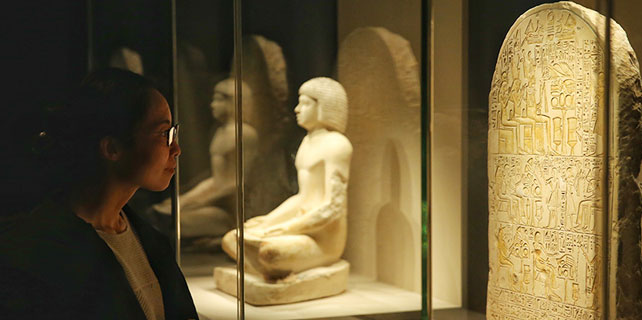China-Australia co-production treaty brings big business to cinema
SYDNEY — Next month will mark 10 years since Australia and China inked a co-production film treaty, which has brought the two countries eight major movies that are estimated to generate tens of millions of dollars.
The original idea for the agreement came about as a way for the Australian film industry to compete with the big Hollywood studios in the United States.
By opening the door to what is fastly becoming the world's No 1 movie market - China, Australia aimed to make itself more attractive for producers looking to invest and cooperate with Aussie films.
On the Chinese side of the equation, the deal also made sense, as it was a way to share elite talent and strengthen its reach to western audiences.
"There was all sorts of discussions about how they could bring, both the economics and the culture together," Screen Australia's Head of Business and Audience Richard Harris told Xinhua recently.
"The great thing about film is, that's where you can bring those two things together in one place."
The treaty itself is essentially, a memorandum of understanding between the two countries, which sets guidelines, so that certain films can be given the go-ahead to continue as an official co-production.
"When a producer has an idea for a project like Guardians of the Tomb for example, the idea of a number of Australian, American and Chinese archeologists in the desert in China discovering a tomb that happens to be infested by spiders, brings together the culture from the Chinese side and the Australian and western side, to make a film that can hopefully work in China," Harris said.
"Then Screen Australia and another organization inside of China do the certifying, as an official co-production, and once it has that certification, then it goes ahead and the Chinese government authorizes it there and then our government authorizes it here."
Essentially, the major benefits for both countries is that filmmakers can access production offsets, as well as government investment in a project.
Among the films that have been a product of the treaty are Guardians of the Tomb, The Dragon Pearl, Children of the Silk Road, 33 Postcards and the yet to be released My Extraordinary Wedding, Tying the Knot, Dog Fight and At Last.
But even outside of the co-productions sphere, the two countries have continued to develop further ties.
Aussie hit Hacksaw Ridge grossed over A$80 million ($61.16 million) at the Chinese box office and was granted an extended theatrical release, beyond the 30-day run given to most foreign films.
Other Australian success stories include, the cult horror Bait 3D, which managed to gross around A$25 million ($19.11 million) and Life of Otto Bloom, which has been shortlisted for the prestigious Tiantan Award at the 2017 Beijing International Film Festival.
At the same time a number of Chinese productions have been filmed in Australia, including Jackie Chan's Bleeding Steel, the largest budget Chinese movie ever shot in down under.
In addition, an upcoming TV series called Butterflies Across the Sea is currently being filmed in South Australia, along with a second show titled Speed.
"One of the advantages Australia has is that it's an amazing location to make films," Harris said. "But we also have amazing talent here."
"There are some really great opportunities to come and make films in this country and there is also great opportunity to use some of our post production facilities, like Rising Sun and Animal Logic, who are doing some of the effects on some of those Chinese films and been doing so for a long time."
The emerging cooperation between Chinese and Australian filmmakers certainly doesn't appear to be slowing down anytime soon and one production house, Sydney Films, has even voiced their intent to identify 20 potential co-productions with China, with a budget of A$400 million($305.80 million).
"What the co-production treaty also does, is it creates the ability to have discussion between our sector and the Chinese sector," Harris said.
"For us, the great thing is that it gives us the opportunity for Chinese and Australian filmmakers to work together, particularly on films that are going to work in the Chinese market."
- Fourth China-Australia Literary Forum opens in Guangzhou
- Australia's Sydney Royal Easter Show gives insight into China-Australia wool trade
- China, Australia to prepare for FTA upgrade talks: Ministry
- China, Australia police arrest 5 drug traffickers
- China, Australia embrace cooperation, free trade in face of rising




















